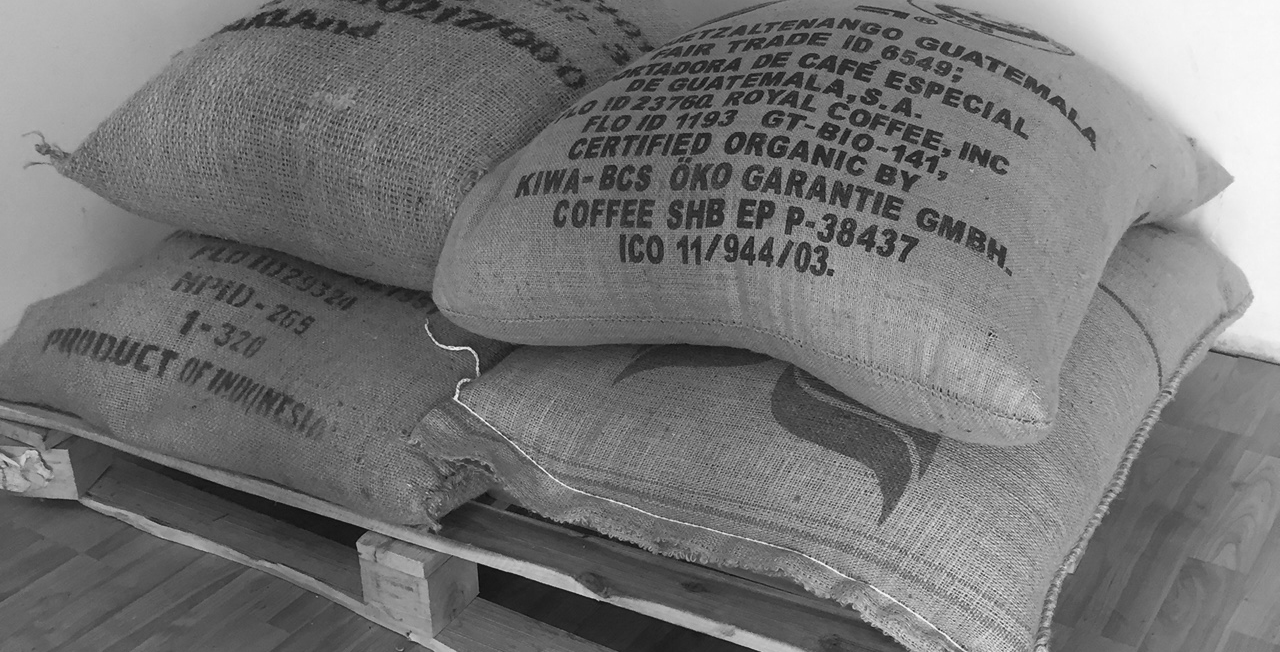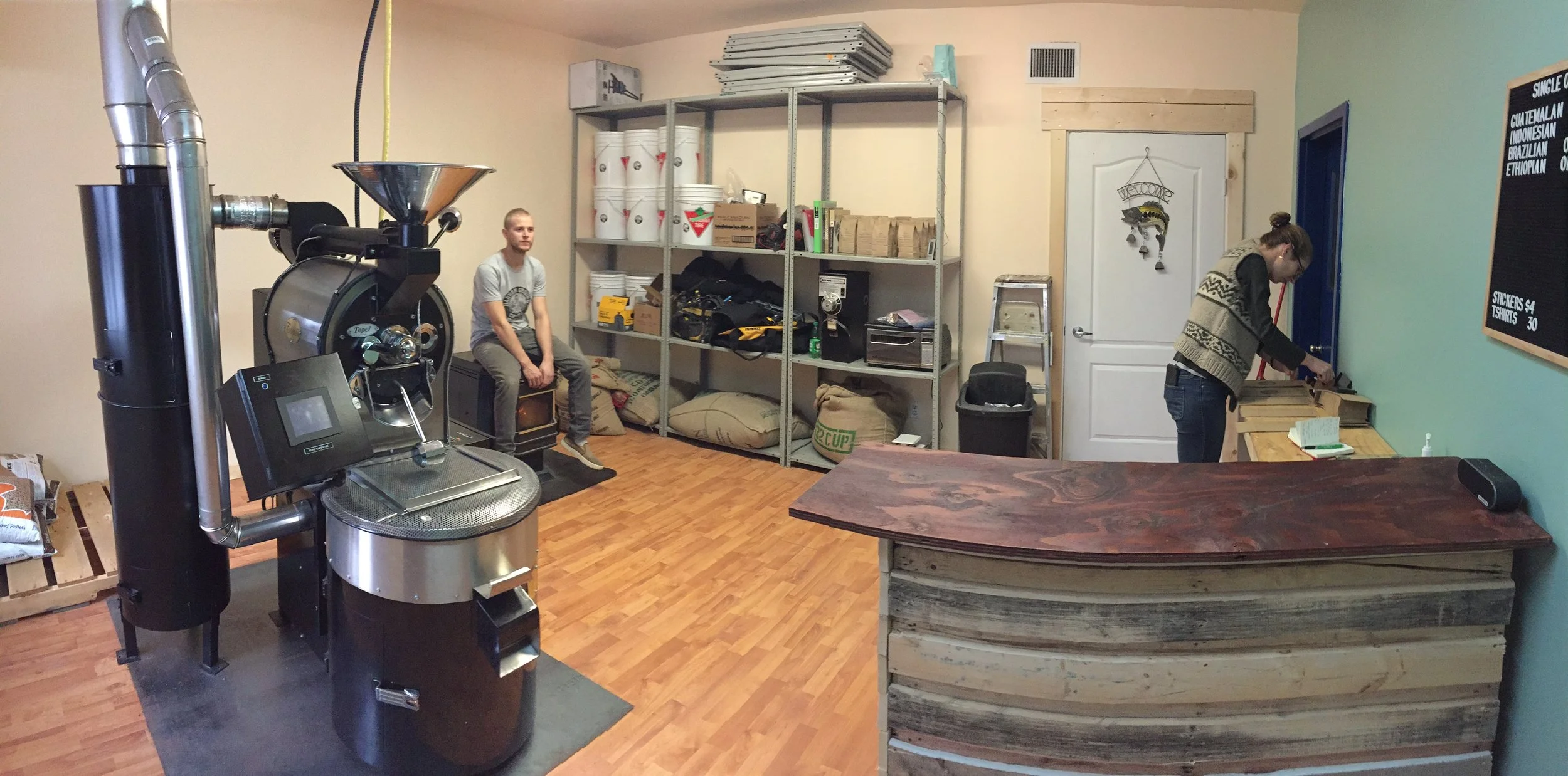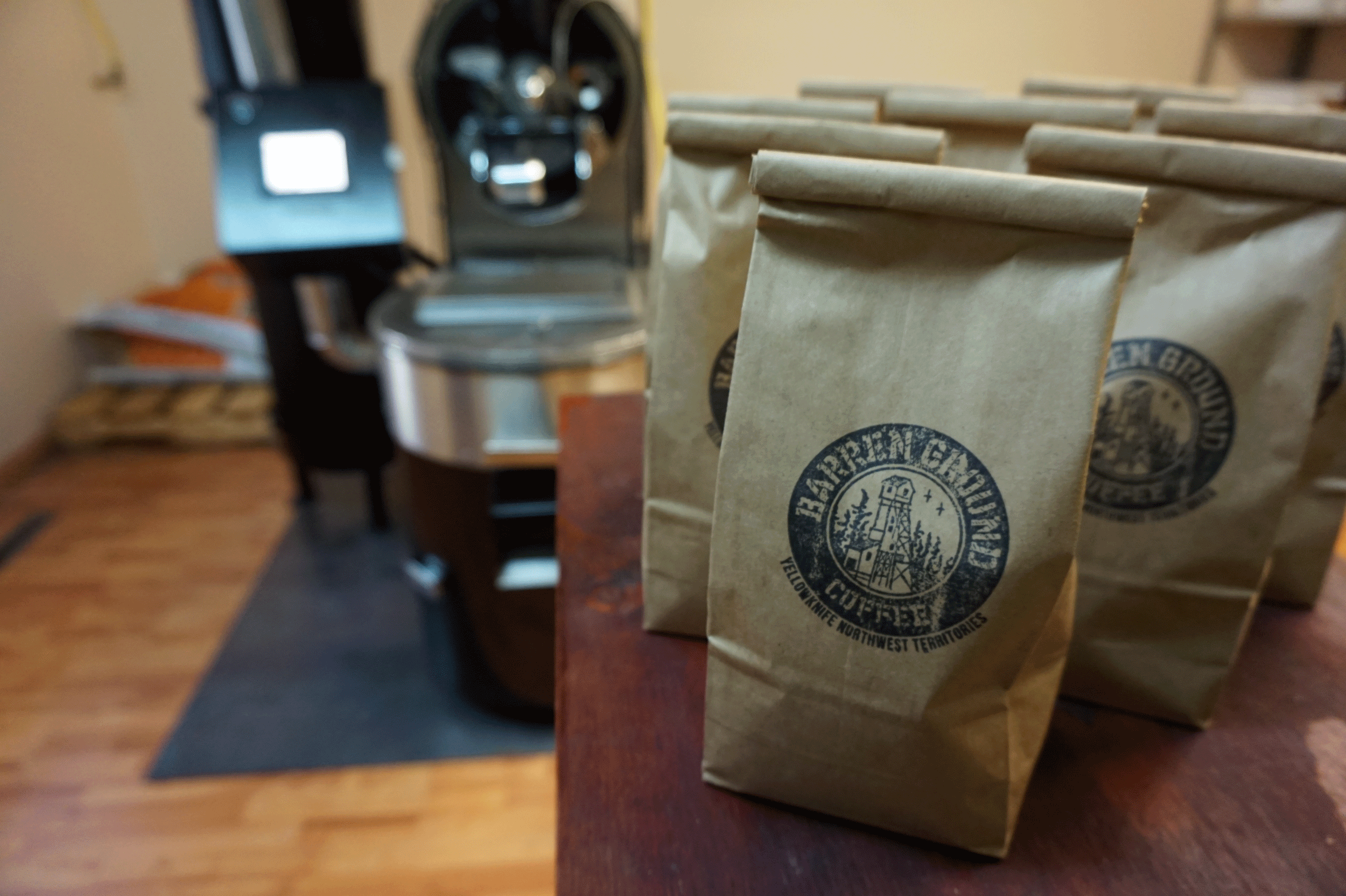Want a toque? You gotta knit your own!
New stamps & Bijou Boutique
Barren Ground Coffee has partnered with Bijou Boutique. Bijou will be selling our coffee starting next week through their store on Franklin. They are open Mon-Sat, 10 am - 5/6 pm.
New stamps!
We have received feedback on our bags and are adding additional information in order to help people decide which coffee is best suited for them. We will have stamps for most of our coffees, but some will still come with the old Origin/Roast stamp.
For the stamps we partnered with design legend Andrew Hall. If you haven't check out his art, you should!
The stamps are broken down into a few categories:
Country and Region: We noted the country of origin and the region.
Certifications: The coffee can be certified as organic, fair trade, or Rain Forest Alliance. If there is no certification it is a "conventional" coffee. On our non-fancy stamped bags these will be noted as ORG, FT, (or FTO for both), or RFA.
Roast: We note roast by the temperature at which the coffee is dropped from the roaster. We use more common terms such as light, medium, medium dark, dark, and French, rather than City, City+, Full City, etc.
Processing: Coffee can be processed a number of ways. Each way impacts the overall flavour of the coffee.
Altitude: Elevation has a major impact on the way a coffee tastes. High elevations produce hard, dense beans, and therefore have higher concentrations of sugars and more nuanced flavours. This is because as the coffee plant grows at higher elevations the conditions are harsher, which slows the bean's maturation process and provides more time for complex sugars to develop.
Cupping notes: Subjective cupping notes from Eric and Cory are included on the bag. "Tastes like a pool toy smells in the sun" did not make the cut (don't worry we don't have a coffee that tastes like that).
Our logo: mining, patches ... and knitting
A few people have asked us where we came up with our logo. Perhaps unsurprisingly the idea was drawn from Yellowknife's history of mining and mine patches. We asked local historian Ryan Silke for some inspiration and he sent us a few photos of patches that miners and their families would wear on their clothing.
The following is a brief explanation of the patches by local historian Ryan Silke:
The gold mines of Yellowknife, and the camps that grew to house workers and their families, were communities to themselves, populated by citizens that took pride in their identity. As a natural result, they exercised a friendly rivalry with other mining camps, manifested most often in competitive sports - hockey, baseball, and curling. Uniforms and jackets distributed by the mine's recreation clubs to their citizens, often of the leather 'teamster'-style with embroidered patch, so common of the 1950s generation, were worn around town to show off one's association with a particular mine or its sport team. 'Grizzlies', 'Cougars', 'Hogans', 'Huskies', 'Indians', or popular local business brands such as 'Frame and Perkins' or 'Lanky's Angels' represented the elite athletes of Yellowknife in its earliest years.
After speaking with Ryan we met and discussed these ideas with former Yellowknifer Andrew Hall. He immediately got to work and drafted a logo that would be reminiscent of the mining period of the 30s - 40s and linked to the ideas brought forth in the mine patches.
As seen on the left, the font typeface he chose for our business name "Barren Ground Coffee" has the look of the classic embroidered patch, as if it is stitched on.
The image to the right shows the interior of the logo which is a stereotypical head frame. Behind it are the scrawny, scraggly, and ubiquitous jack pine.
People have noted that we are Barren Ground, a synonym of the tundra, and have mentioned the trees in our logo. Our name is a play on words (ground coffee?) and the owners of Barren Ground Coffee know well that the use of barren grounds to explain the tundra is a great misnomer, as the region is rich with beautiful flora and fauna. Some of this flora does include scrawny jack pines!
In the next month or so we will be releasing our very own patch. You will be able to purchase it on its own or it will be included in our "knit-your-own-toque-kit". The kit will include locally dyed wool.
Good day Fort Smith!
We have partnered with Anna's Home Cooking and have sent down two coffees that will be sold at the Thebacha Campus Mon-Fri 8-4. We sent down two freshly roasted coffees this week.
Brazil Fazenda Saquarema
- Grown at 1000-1200 meters elevation
- Organic certification
- Naturally processed
- Sun dried on a patio
BGC cupping notes: Low acidity, complex with a smooth, silky body, and a lingering peanut butter finish accompanied by notes of cocoa powder and almonds.
Ethiopian Limmu Burka Gardina Estate
- Grown at over 1800 meters elevation
- Organic certification
- Naturally processed
- Sun dried
BGC cupping notes: Sweetly intricate, oranges, berries, roasted cacao in aroma and cup. Crisp, lively acidity; light mouth feel. All flavor notes carry into the sweet crisp, flavour-saturated finish
Fundamentals of brewing: the pour over
Disclaimer: There are a hundred ways to brew a cup of coffee just like there are a hundred ways to cook an egg. We can provide a rough guide based on our experience and SCAA guidelines, however, you should tweak the process to your heart's content in order to find your coffee sweet spot.
What you need
- Dripper (ceramic or plastic)
- #2 filter (or reusable filter)
- Fresh, locally roasted coffee (try a nice single origin)
- Hot water
- Mug
- Kettle
- Timer (smart phone)
- Grinder (recommended)
- Scale (recommended)
Measurements
We will aim for a 17:1 ratio (17 grams of water for every 1 gram of coffee). Therefore, you will need around 15 g (2 large table spoons) of coffee for 250 ml (average coffee mug size).
Step 1: Heat your water and bring it to a boil.
Step 2: Place your #2 filter in the dripper. Place dripper over your mug. Without any coffee in the filter, pour some of the hot water over the filter and into the mug. This does three things: 1. It will make it easier for keeping the filter in place; 2. It will warm your mug up; and 3. It will rinse the filter paper. Don't believe us? Depending on your filter paper you will see that the water in your mug is yellowish. Taste it! Might taste like paper or bleach. You don't want that in your coffee. Pour that hot papery water out from your mug!
Step 3: Add the appropriate amount of freshly ground coffee. You want to aim for a medium to fine grind (something resembling sand or table salt). Again, you will have to experiment with each coffee and make changes to your grinder.
Step 3: Pour enough water over the coffee to saturate the coffee and then stop for ~30 seconds and let the fresh coffee bloom. We do a very quick stir to make sure all the coffee is being drenched by the water (this can be contentious!).
Step 4: After waiting ~30 seconds continue to pour while making sure all the grounds are saturated. Again, you could do another quick (and contentious) stir of the coffee to make sure is all being extracted and settling well.
We will be on tap at the NWT Brewing Co.
You can now sample our fine coffee at The Woodyard! The NWT Brew Co. will celebrate 2 years of pouring local NWT beer in the North with a special collaboration Anniversary Breakfast Stout featuring Barren Ground Coffee!
BGC provided a dark roast Sumatran organic coffee from the Tunas Indah Coffee Farmers Cooperative in Indonesia. It is the same coffee we offered as our french roast! The coffee is a mixture of 3 varietals and the beans are fully washed, which takes more skill and generally produces a very high quality coffee.
Join BGC staff at The Woodyard Saturday December 30th for a night of celebration including an East Meets West themed tapas featuring Pork & Vegetable Asian buns, sticky pork ribs, fried tofu, tempura ling cod and much more! No tickets, no cover!
For more info check the NWT Brew Co Facebook page.

























